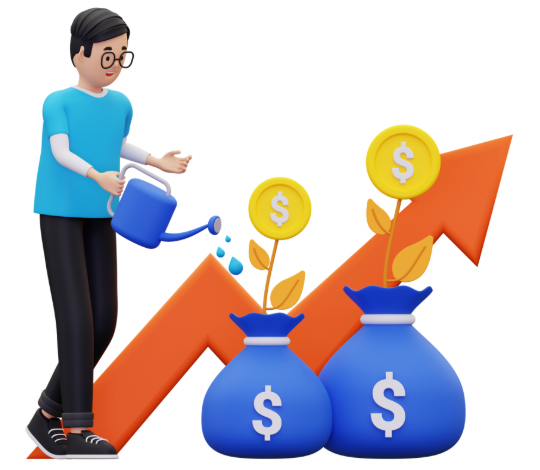Is Investing in Diamonds a Smart Choice? Insights and Considerations

Diamonds are often seen as a symbol of luxury and elegance, but they are also increasingly becoming a sought-after asset for investors. While diamonds are traditionally bought for their beauty and status, the growing demand and the evolution of the diamond market have led some investors to view them as a potential investment opportunity. But, are diamonds really a good investment? In this guide, we’ll explore the factors to consider before investing in diamonds, along with their pros and cons.
What is Diamond Investment?
Investing in diamonds involves purchasing high-quality diamonds with the goal of generating a profit in the future. Historically, diamonds have been valued for their beauty and prestige, but in recent years, they have gained attention as a way to diversify investment portfolios. Much like real estate or gold, diamonds can appreciate over time, offering investors the potential for financial gain.
The rise of emerging markets and increasing interest in alternative investments have made diamonds a more popular choice for some investors. However, before jumping into diamond investing, it’s important to understand the risks and rewards involved.
Are Diamonds Worth Investing In?
Diamonds can be a worthwhile investment, but it’s important to consider factors such as supply, demand, and ethical sourcing before making a decision. The diamond market operates largely on the principles of supply and demand, and these forces, alongside ethical sourcing concerns, can impact prices.
The global diamond market is valued at over $100 billion and is projected to exceed $140 billion by 2029. The scarcity of natural diamonds, combined with growing interest in ethically sourced gems, is driving demand. However, the rise of lab-grown diamonds, which are typically priced lower than natural diamonds, is affecting market dynamics. Thus, it’s crucial to understand the nuances of the diamond market before viewing it as a guaranteed investment.
Types of Diamonds to Invest In
There are various ways to invest in diamonds, each offering different potential returns. Some options may be better suited for those who want an investment that they can also wear and enjoy, while others may be better for those looking for higher resale value.
- Investment-Grade Diamonds: These are high-quality diamonds with excellent grading. They are typically the best choice for investment, as they hold their value over time.
- Loose Diamonds: Unset diamonds purchased specifically for investment purposes. Loose diamonds are often sought after by investors due to their potential for high resale value.
- Certified Diamonds: These diamonds are graded and certified by reputable institutions, ensuring their authenticity and value.
- Diamond Jewelry: Fine diamond jewelry, such as rings or necklaces, can also serve as an investment, offering both aesthetic enjoyment and long-term value appreciation.
Lab-grown diamonds have gained attention as a cost-effective and ethical alternative to natural diamonds. While they may not hold the same value as natural diamonds, they are an increasingly popular option for those looking to invest in diamonds at a lower price point.
How to Invest in Diamonds Wisely
Investing in diamonds requires careful consideration of several factors that can impact the long-term value of your purchase. Here’s what to keep in mind when buying diamonds as an investment:
- Certification: Always ensure the diamonds you purchase are certified by a recognized institution, such as the Gemological Institute of America (GIA). Certification guarantees the quality and authenticity of the diamond.
- The 4Cs: Understand the four key factors that determine a diamond’s value: clarity, cut, color, and carat weight. These elements influence a diamond’s overall quality and resale potential.
- Ethical Sourcing: With increasing consumer awareness around ethical sourcing, consider investing in diamonds that are responsibly sourced. Ethically sourced diamonds may hold more value in the long run as the demand for them rises.
- Market Timing: The diamond market can fluctuate based on trends, demand, and economic conditions. Staying informed about market trends will help you make smarter decisions about when to buy or sell your diamonds.
Pros and Cons of Investing in Diamonds
Like any investment, there are both benefits and challenges to investing in diamonds:
Pros
- Compact and Portable: Diamonds are small and easy to store, making them a convenient investment.
- Scarcity: Natural diamonds are limited in supply, which can drive up their value over time.
- Potential for Appreciation: High-quality diamonds, particularly rare ones, can appreciate in value, offering a profitable investment in the long term.
- Inflation Resistance: Diamonds are often seen as a hedge against inflation, as their value can increase over time, especially when inflation rises.
Cons
- Price Volatility: While diamonds can appreciate, their prices can also fluctuate. The diamond market is less liquid than other traditional investments like stocks or real estate, meaning it can take longer to sell your diamonds for a fair price.
- Lack of Liquidity: Selling diamonds at their expected value may require patience, as finding a buyer willing to pay the right price can be challenging.
- Expertise Required: Assessing the true value of a diamond requires expertise, which may be difficult for new investors to develop.
External Factors That Affect Diamond Value
Several factors can influence the value of diamonds over time. These include:
- Limited Supply: Natural diamonds are a finite resource, and new diamond mines are rarely discovered. The careful management of supply and demand helps maintain the value of diamonds.
- Market Fluctuations: Diamond prices can be affected by changes in the broader economy, interest rates, and consumer trends. Unlike more stable assets like stocks or real estate, diamonds can experience volatility based on these external factors.
- Marketing Influence: The diamond industry has historically invested heavily in marketing campaigns to increase demand. For example, De Beers’ famous marketing campaign in the 1930s helped establish diamonds as a symbol of engagement and love.
- Consumer Preferences: Changing preferences, such as the growing popularity of lab-grown diamonds, can influence market trends and the long-term value of natural diamonds.
Final Thoughts
Investing in diamonds can be a smart choice for those looking to diversify their portfolios and invest in a tangible asset with the potential for long-term appreciation. However, it’s important to consider the complexities of the diamond market, including factors such as certification, the 4Cs, ethical sourcing, and market timing.
While diamonds may offer a hedge against inflation and provide opportunities for profit, they also come with challenges, including volatility and liquidity issues. If you’re considering diamonds as an investment, be sure to do your research and seek advice from experts to make informed decisions that align with your financial goals.




